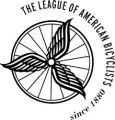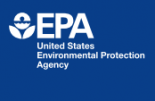A Critical Evaluation of Electric Vehicle Benefits This 1999 paper by Todd Litman of the Victoria Transport Policy Institute investigates electric vehicle benefits and costs.
This 1999 paper by Todd Litman of the Victoria Transport Policy Institute investigates electric vehicle benefits and costs.
A Critical Evaluation of Electric Vehicle Benefits (PDF) (76KB)
Assessment of Pedestrian and Transit Improvements as an Integrated GHG Reduction Strategy (WA DOT) This April 2011 study from the Washington State Department of Transportation investigates the impact of various community design strategies on travel and carbon emissions. Among the findings: Filling in a community's sidewalk network so that 70% of streets offer safe pedestrian space reduces vehicular travel by 3.4% and carbon emissions by 4.9%. Other factors, such as a mix of land use and changes in the price of parking, also reduced vehicular travel and emissions.
This April 2011 study from the Washington State Department of Transportation investigates the impact of various community design strategies on travel and carbon emissions. Among the findings: Filling in a community's sidewalk network so that 70% of streets offer safe pedestrian space reduces vehicular travel by 3.4% and carbon emissions by 4.9%. Other factors, such as a mix of land use and changes in the price of parking, also reduced vehicular travel and emissions.
Assessment of Pedestrian and Transit Improvements as an Integrated GHG Reduction Strategy (PDF)
Auto Industry Leaders on Global Warming
This 2007 article asks the leaders of the auto industry what their thoughts are on global warming.
Auto Industry Leaders on Global Warming(URL)
Carbon Emissions Per Mile Traveled The Sightline Institute has statistics on CO2 emission per miles traveled by various methods of transport.
The Sightline Institute has statistics on CO2 emission per miles traveled by various methods of transport.
Carbon Emissions Per Mile Traveled (URL)
Carbon Footprint Calculation (URL)
Climate Change & Bicycling: How bicycling advocates can help craft comprehensive Climate Action Plan This September 2010 report from the Advocacy Advance Team — a partnership of the Alliance for Biking & Walking and the League of American Bicyclists — outlines how bicycling advocates can push for the inclusion and implementation of policies that promote cycling in city, state and university Climate Action Plans.
This September 2010 report from the Advocacy Advance Team — a partnership of the Alliance for Biking & Walking and the League of American Bicyclists — outlines how bicycling advocates can push for the inclusion and implementation of policies that promote cycling in city, state and university Climate Action Plans.
Climate Change and Bicycling (34 pages) (PDF)
Comparing Transportation Emission Reduction Strategies This 1999 report by Todd Litman of the Victoria Transport Policy Institute examines how the evaluation of transportation emission reduction strategies changes as an analysis becomes more comprehensive. Four categories of transportation emission reduction strategies are considered: increasing vehicle fuel efficiency, alternative fuel vehicles, revenue-neutral tax shifts, and transportation demand management strategies. Several "Win-Win" no regrets strategies are identified.
This 1999 report by Todd Litman of the Victoria Transport Policy Institute examines how the evaluation of transportation emission reduction strategies changes as an analysis becomes more comprehensive. Four categories of transportation emission reduction strategies are considered: increasing vehicle fuel efficiency, alternative fuel vehicles, revenue-neutral tax shifts, and transportation demand management strategies. Several "Win-Win" no regrets strategies are identified.
Comparing Transportation Emission Reduction Strategies (PDF)
Dirty From Cradle to Grave
This short paper by John Whitelegg summarizes a report from the respected Environment and Forecasting Institute in Heidelberg, Germany. "The German analysts take a medium-sized car and assume that it is driven for 13,000 km a year for 10 years. They then compute its financial, environmental and health impacts 'from cradle to grave."
Dirty From Cradle to Grave (PDF) (13KB)
Greenhouse Gas Emissions from the U.S. Transportation Sector 1990-2003 This 2006 report from the U.S. Environmental Protection Agency gives an overview of greenhouse gas emissions and transportation and estimates emissions by transportation vehicle type.
This 2006 report from the U.S. Environmental Protection Agency gives an overview of greenhouse gas emissions and transportation and estimates emissions by transportation vehicle type.
Greenhouse Gas Emissions from the U.S. Transportation Sector 1990-2003 (PDF) (1.14MB)
Holding Transportation Accountable for Air Quality Performance Holding Transportation Accountable for Air Quality Performance is the testimony of Michael Replogle, Transportation Director of Environmental Defense, before the Senate Environment and Public Works Committee, United States Senate July 30, 2002. He discusses transportation and air quality, especially focusing on transportation conformity and the Congestion Mitigation and Air Quality Program and offers views on how the re-authorization of TEA-21 can enhance these programs.
Holding Transportation Accountable for Air Quality Performance is the testimony of Michael Replogle, Transportation Director of Environmental Defense, before the Senate Environment and Public Works Committee, United States Senate July 30, 2002. He discusses transportation and air quality, especially focusing on transportation conformity and the Congestion Mitigation and Air Quality Program and offers views on how the re-authorization of TEA-21 can enhance these programs.
Holding Transportation Accountable for Air Quality Performance (PDF) (491KB)
Rolling Carbon: Greenhouse Gas Emissions from Commuting in New York City ( T.A.) October 2008 report posted on Transportation Alternatives website. This report focuses on reducing vehicle use. According to the report, "Focusing on CO2, the predominant greenhouse gas, we first present an analysis of CO2 emissions from various transportation modes in New York City; then use this analysis to estimate commuting CO2 emissions within the City; and finally explore the CO2 reductions possible from certain commuting modal shifts."
October 2008 report posted on Transportation Alternatives website. This report focuses on reducing vehicle use. According to the report, "Focusing on CO2, the predominant greenhouse gas, we first present an analysis of CO2 emissions from various transportation modes in New York City; then use this analysis to estimate commuting CO2 emissions within the City; and finally explore the CO2 reductions possible from certain commuting modal shifts."
Rolling Carbon: Greenhouse Gas Emissions from Commuting in New York City (PDF) (828 KB)
Transportation's Role in Reducing U.S. Greenhouse Gas Emissions This 2010 USDOT study, mandated by the Energy Independence and Security Act, evaluates potentially viable strategies to reduce transportation greenhouse gas emissions.
This 2010 USDOT study, mandated by the Energy Independence and Security Act, evaluates potentially viable strategies to reduce transportation greenhouse gas emissions.
DOT Climate Change Report (PDF)

